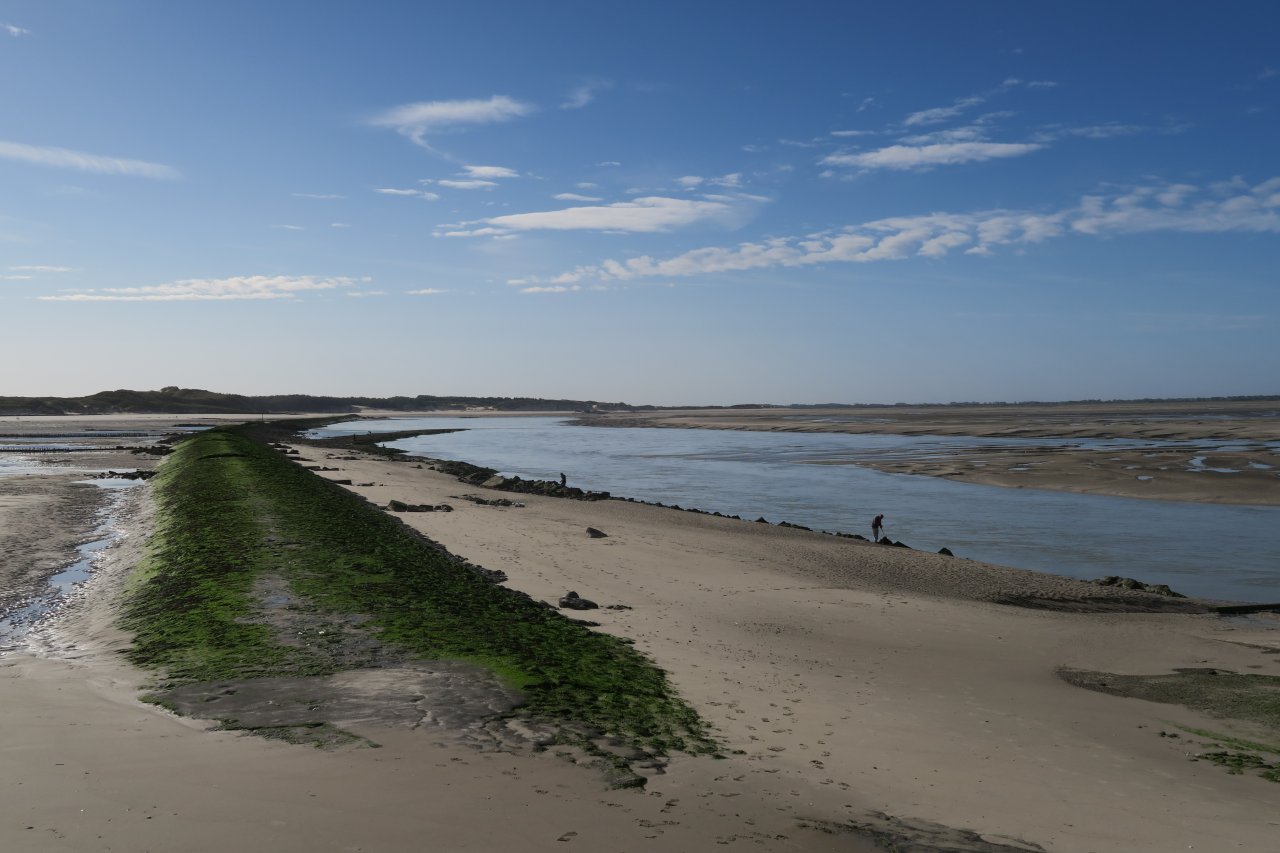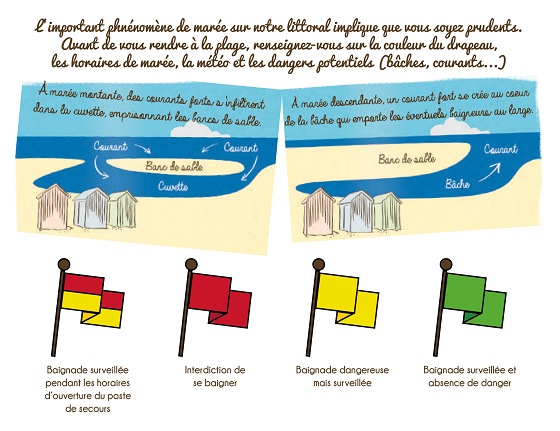

Each day there are two high tide cycles and two low tide cycles. Between each cycle, there is a slack water period, when there is no current. It lasts about twenty minutes.
![]()

During high tides, the Promenade Professeur Jean Debeyre, which connects the central beach to the Baie d'Authie, may be flooded. For your safety, barriers are placed on both sides of the promenade to prevent access to the promenade (see decree no. 2018-674)
January 2024 : from Friday the 13th to Monday the 16th
February 2024 : from Tuesday the 10th to Sunday the 15th
March 2024 : from Monday the 9th to Sunday the 15th
April 2024 : from Saturday the 7th to Thursday the 12th
May 2024 : from Friday the 6th to Tuesday the 10th
June 2024 : no high tides
July 2024 : from Monday the 23rd to Thursday the 26th
August 2024 : from Friday the 20th to Tuesday the 24th
September 2024 : from Tuesday the 17th to Sunday the 22nd
October 2024 : from Monday the 16th to Saturday the 21st
November 2024 : from Sunday the 15th to Wednesday the 18th
December 2024 : no high tides


Be careful to the tide timetable! When the sea is rising, strong currents come in basins and surround the sand banks.
When the sea is picking up, a strong current empties the basins and could sweep you away. Look after the flags at the first-aid post:
Red/Yellow: supervised bathing during the opening hours of the first aid post
Red: Bathing prohibited
Yellow: supervised bathing, danger
Green: supervised bathing, no danger
Supervised bathing area delimited:
- to the south by the extension of Avenue Francis Tattegrain
- to the North by the extension of Rue Lavoisier
Supervision is provided from 30 June to 2 September.

- Don't go too far from the shore, and don't overestimate yourself. Swimming in the sea can be dangerous due to currents and waves.
- If you are caught in the current, do not swim against it but let yourself be carried to try to reach the beach.
- In hot weather, avoid the 12-4pm time slot, especially with children. When swimming, get wet gradually to avoid thermal shock.
- Remember to protect yourself and your children from the sun with sun cream, a hat or a cap. Moisturise regularly and apply cream every two hours.
- Give the children a landmark (e.g. totems installed on the beach) and equip them with a bracelet with your telephone number.
- Keep a constant watch on children on the beach as well as in the water, in case of emergency contact the sea rescue service at 196.